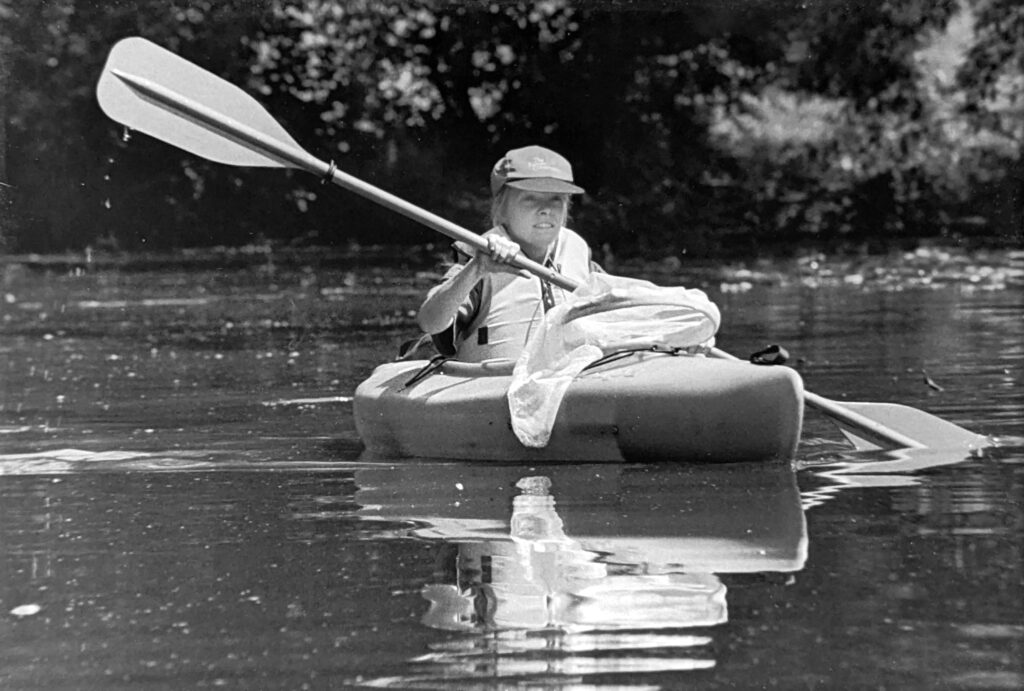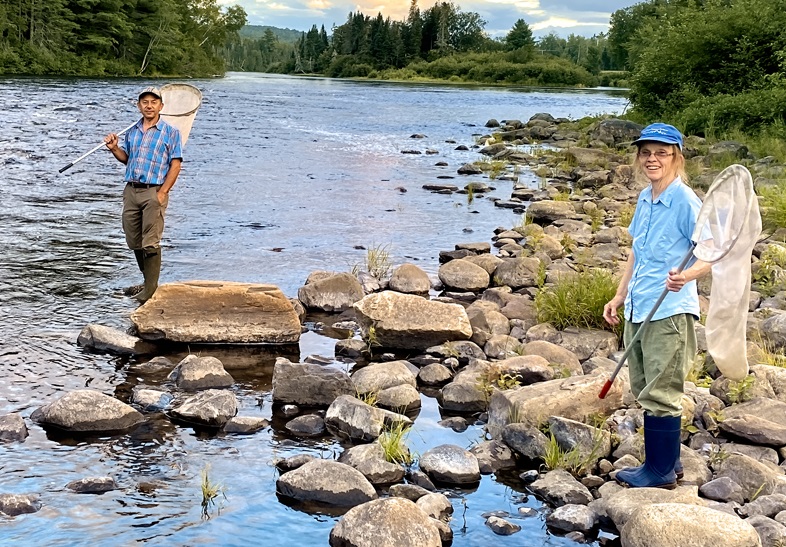A meticulous field scientist and a conservationist; when the little things count, you can count on her.

Virginia “Ginger” Brown is the state’s leading expert on the Odonata—the order of insects comprised of the dragonflies and damselflies—and the author of two authoritative books on the group. Early in her career, Ginger worked for the Cape Cod Museum of Natural History. It was during her time at the Museum that she published her first book, in 1991: Dragonflies and Damselflies of Cape Cod (Cape Cod Mus. Nat. Hist. Natural History Series no. 4). A revised edition was published in 1997.
Ginger moved from the Cape Cod Museum to The Nature Conservancy, Rhode Island chapter. At TNC she had a major role in their Natural Heritage program, where they collaborated with RIDEM on rare species. When TNC passed their role in the Natural Heritage program to the Rhode Island Natural History Survey, Ginger became a Survey biologist. Currently, she teaches about environmental science and nature for Living In Fulfilling Environments, Inc. and for the Audubon Society of Rhode Island. And she hasn’t given up her passion for odonate conservation, and gets out to chase dragonflies and other insects as often as possible.
It was at TNC that she began the Rhode Island Odonata Atlas project—a statewide inventory of dragonflies and damselflies—which continued after her transition to the Survey. She trained a corps of about 70 volunteers who collected specimens around the state, visiting more than 1,100 ponds, lakes, streams, rivers, and other sites in every community. More than 13,000 specimens were collected and identified. Overall, more than 100 species were recorded in five communities, and at least 90 species were found in an additional seven communities. The formal Atlas project collections were mainly between 1998 and 2004, but she has been studying the group for over 40 years in all—before the Atlas collections began and more or less continuously ever since.
All those years of work resulted in her second book, Dragonflies and Damselflies of Rhode Island, which was published in 2021 by the RIDEM Division of Fish and Wildlife. The book includes detailed accounts of all 139 odonate species found in the state, with illustrations by Nina Briggs. Of course, that is not the end of it. Ginger is now overseeing an update of the Odonata Atlas that began in 2022, to look for any changes in the state’s dragonfly and damselfly fauna in the two decades since the first atlas sampling was completed.

Todd McLeish was one of the volunteers on the original Atlas, and spoke at the award ceremony last fall. He remarked that what impressed him first about Ginger was that she was a great teacher. She served as an educator and mentor for an entire group of beginners who knew little about dragonflies—providing the right level of encouragement and the right amount of natural history information about plants, insects, and other groups so everyone would feel comfortable and like they were making a valuable contribution. When Todd was writing his first book—about rare species in New England and the scientists studying them—he turned to Ginger as his primary source for the chapter on the ringed boghaunter (more below). She took him to some of her super-secret locations to see the breeding ponds of some of the state’s rarest dragonflies, answered question after question about the Atlas, and happily (seemingly) put up with being repeatedly referred to in print as the dragon lady.
In accepting the Distinguished Naturalist Award, Ginger pointed out the urgency for land protection to conserve biodiversity in the face of a changing climate, and the importance of documenting and disseminating information. She spoke about how field work has gotten easier in some ways since she first started. Insect nets are still the same, and sinking to your knees in the mud in some swamp hasn’t changed, but being able to take good photos and record field notes in a smart phone is much more convenient than carrying a heavy camera and writing field notes in a notebook.
She also emphasized the continuing need for voucher specimens. One of Rhode Island’s two State Endangered insects is a dragonfly called the ringed boghaunter. The species was described based on a specimen collected near Albany, New York, in 1874 and deposited in the New York State Museum (the “type” specimen). The type location no longer exists because of development, and the species has never been found again in New York State. Without the type specimen, it becomes much harder to confirm the identification of any new ones. Voucher specimens are also important for other reasons. After the first Atlas was completed, researchers concluded that a damselfly called the northern spreadwing was actually two different species. Voucher specimens allowed checking (with a microscope) to see which species had been collected in Rhode Island.
Ginger also emphasized how much we need to get students inspired and involved. We are going to need new scientists coming up through the educational system to fix the mess that the “grown-ups” have made of our environment.